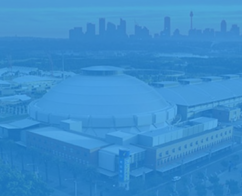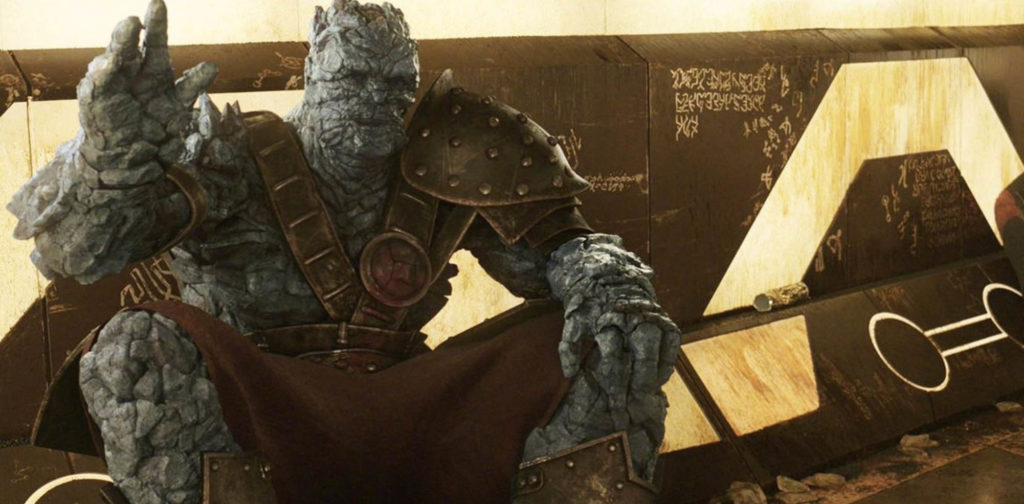
I was fifteen when the first Avengers movie came out. At last, my time had come; after years of borrowing the same three comics from my local library, Saturday mornings religiously spent watching Wolverine and the X-Men, it was finally here: the superhero movie of my dreams. For the better part of the next decade, I was at every midnight screening, hooked on every new trailer. And then Endgame came out.
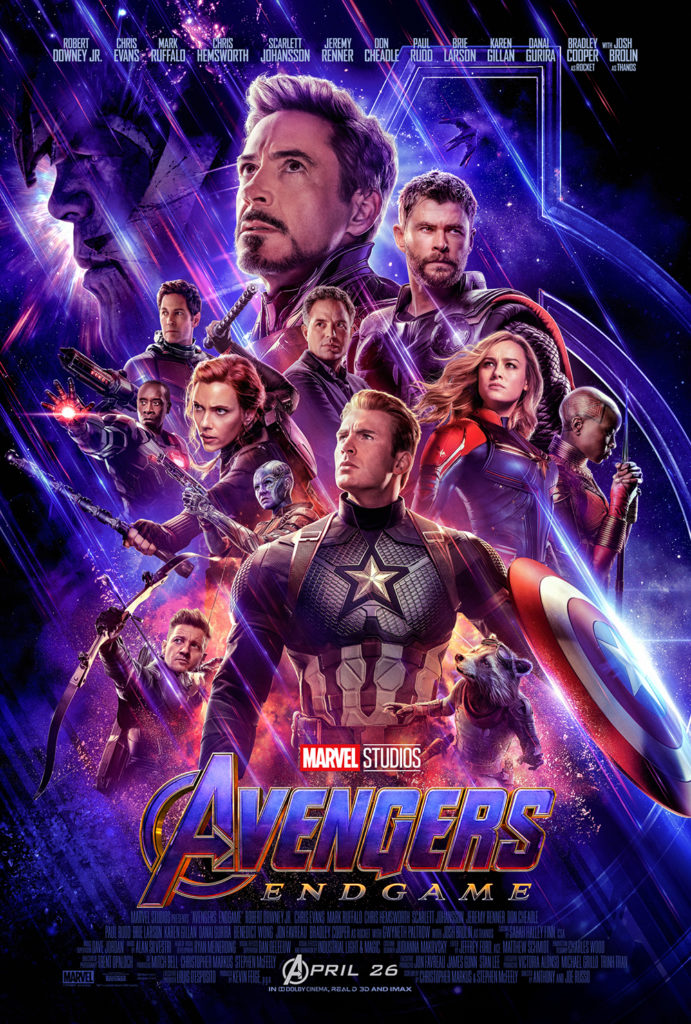 I had been out of university for more than a year at that point, my life unfolding rapidly before me. And, like many others, Endgame felt like a goodbye. There is a distinct before and after of the biggest cinematic event of our time, and for me personally, Endgame marked the time that I checked out. Where do we go from here, when the ‘greatest’ enemy has been defeated? The quips weren’t landing, the emotional punches don’t have the impact they once did. It wasn’t until the release of Doctor Strange in the Multiverse of Madness that I realised, my favourite Marvel movies… aren’t really Marvel movies.
I had been out of university for more than a year at that point, my life unfolding rapidly before me. And, like many others, Endgame felt like a goodbye. There is a distinct before and after of the biggest cinematic event of our time, and for me personally, Endgame marked the time that I checked out. Where do we go from here, when the ‘greatest’ enemy has been defeated? The quips weren’t landing, the emotional punches don’t have the impact they once did. It wasn’t until the release of Doctor Strange in the Multiverse of Madness that I realised, my favourite Marvel movies… aren’t really Marvel movies.
Sam Raimi’s previous Marvel film, Spider-Man 3, received… a variety of reactions, as did news of his appointment as director for the Doctor Strange sequel. Multiverse of Madness is by no means the first superhero horror movie (Chronicle [2012] and Brightburn [2019], for example), but Raimi’s arrival marked a distinct pivot in the Marvel filmmaking formula, ‘putting their toe’ into the horror genre in Raimi’s words.
The word auteur gets thrown around Raimi a lot, so the main concern in the run-up to the release of Multiverse of Madness wasn’t if it would be a good film or not, rather how much Disney was willing to let Raimi get away with. At risk of being strung up for spoilers, the film delicately walks the line between hitting the overarching Phase 4 story beats, and striking out on its own. Zombie Strange with demon bat wings? Occult sorcery rituals corrupting those who seek to wield them? Yes please. And amongst the epic fight sequences and CG insanity that are a staple for Marvel (these are still fun, don’t get me wrong), is a central question: “Are you happy?”
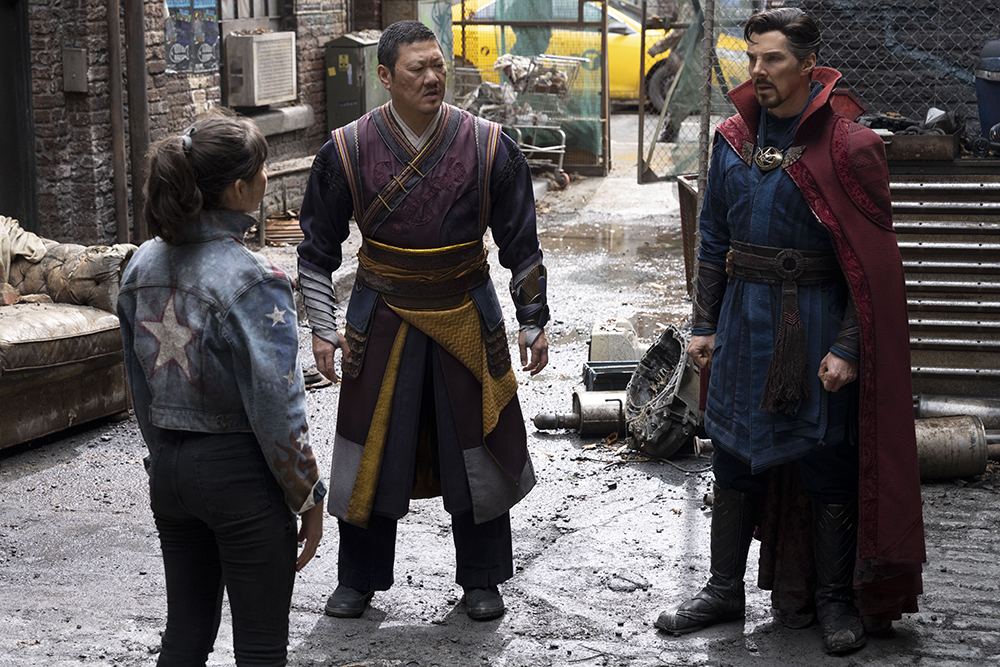
Xochitl Gomez as America Chavez, Benedict Wong as Wong, and Benedict Cumberbatch as Doctor Strange/Stephen Strange in Doctor Strange in the Multiverse of Madness. Photo by Jay Maidment
This question haunts Strange more than anything the Darkhold could throw at him, and it reminded me of why I fell in love with superhero movies in the first place: the characters. I’ll admit, I was in it for the horror movie rather than the titular character, but in those moments when Strange saw himself denied happiness in reality after reality, over and over again, I saw what captivates me about the superhero genre to begin with. Regular people making terrible choices, for the benefit of others. The zombie with demon bat wings helped though.
Let’s step back in time for a moment to revisit my favourite Marvel movie. One of my favourite movies ever, to be honest. Kenneth Branagh, bless him, brought all his Royal Academy of Dramatic Art training, his BAFTAs, his knighthood, to Thor and Thor: The Dark World. They were fine. But then came the pivot. In came Taika Waititi, blasting Immigrant Song by Led Zeppelin. It was colourful, it was loud, it was fun. It was pure, unadulterated Taika silliness. The same witticisms, heart, and sheer joy felt in Boy (2010), What We Do In the Shadows (2014), and Hunt for the Wilderpeople (2016) was brought into the MCU, a stark change from earlier entries from the franchise. And it worked, so well that Waititi was asked to come back for the sequel.
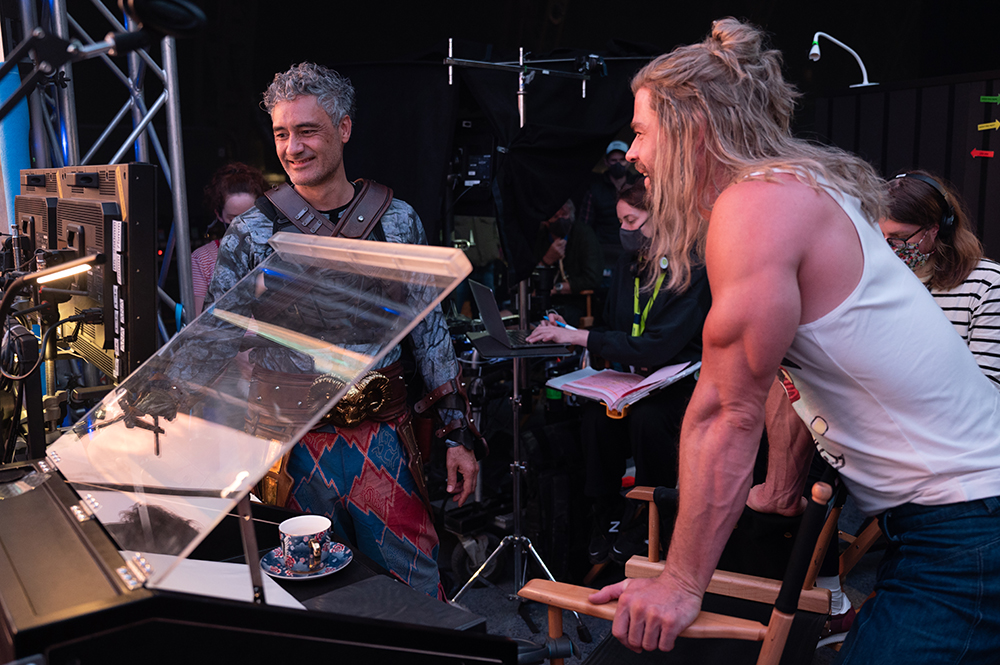
Taika Waititi and Chris Hemsworth on the set of Thor: Love and Thunder. Photo by Jasin Boland
His dedication to making his own film, on his terms, was what made Ragnarok: “[It] has to be a standalone film because this could be the only time I do this. I just want to make it [my] version of a Marvel film in the best way possible,” he told Collider. Disney let Waititi run wild, so much so that Mark Ruffalo allegedly thought they’d all get fired, and it brought so much life to Thor that it felt more like a soft reboot than a threequel.
I doubt my affection for Marvel movies will ever truly fade. Despite the gripes I had with it on the drive home, Endgame still made me cry in the cinema. The problem, at least in my opinion, is that in creating this incredible suite of media, always looking to the future, to the next big thing, Marvel needs to put more faith in their creatives. There are too many story beats to hit, too many setups that won’t be resolved until three movies and a mini-series down the line, that they couldn’t possibly leave them in the hands of the very people they hire. But I hope, looking to the future and the creative risks that Marvel have slowly been dipping their toes into, that we will see more movies that experiment, delight in the unknown, and really experiment with what superheroes can be.


